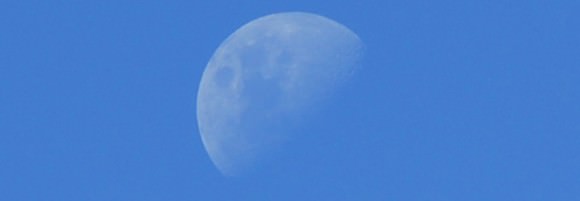Did you know that you can see the Moon during the day?
Many people only notice our Moon at night, when there is considerably more contrast between the Moon and the night sky. Being the second brightest object in the sky (after the Sun, of course) and with Venus visible during the day to trained eyes, it’s no real surprise that the Moon is visible during the day.
Why then, do so many people act surprised when they notice the Moon during the day? What makes it possible for the Moon to be visible during the day?
Understanding how and when you can spot the Moon is a matter of knowing the different lunar phases, specifically the relationship between the Sun, Earth and the Moon during each phase. The image below shows the simple geometry responsible for each of the Moon’s distinct phases.
In the diagram it’s pretty easy to see that when Earth is between the Sun and the Moon, we see a full moon. When the Moon is between Earth and the Sun, we see a new Moon. The other phases are simply transitions from new to full and from full back to new.

Schedule of Moon Phases. Times shown indicate when the moon is overhead.
Based on the orbital geometry of the Moon, there will certainly be times where the Sun will partially illuminate the Moon, during the day and at night. What makes the lunar cycle even more interesting is that the moon rises about an hour later each day, and yet invariably, a full moon rises near dusk and sets near sunrise. The reverse is true in that a new moon rises near sunrise and sets near dusk.
Looking at the above diagram though, a question comes to mind…
Why don’t we have a lunar eclipse during each full moon, or a solar eclipse each new moon?
I’ll explain the conditions needed for a solar or lunar eclipse in an upcoming article.
In the meantime enjoy the transition from waning gibbous to waning crescent over the next week and get your telescopes out during the weekend of the 25th. The Moon will almost be at its new phase.
If you’d like to learn more about moon phases and when the moon will be visible in your area, the US Naval observatory has a great calculator at:http://aa.usno.navy.mil/data/docs/RS_OneYear.php
Provided by Universe Today
No hay comentarios:
Publicar un comentario